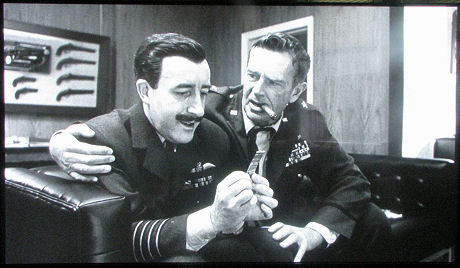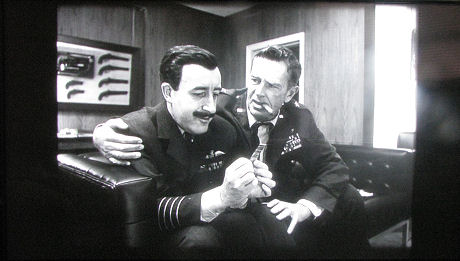Criterion’s Dr. Strangelove Bluray arrived this afternoon. Panting, pulse-quickening excitement…right? How does this 4K-scanned version compare to the 2009 Sony Home Entertainment Bluray? Well, it looks great as far as it goes. The blacks are wonderful. The grainy portions seems a bit grainier, but Strangelove grainstorms has always been pretty thick. It seems to deliver just a wee bit more information on the tops, bottoms and sides than the ’09 disc. (Just a glancing impression.) Some portions seem a little dark for my tastes but only here and there. I’ve been told that the Criterion is sourced from the exact same Grover Crisp-supervised harvest used for the Sony Bluray. It’s a very nice-looking disc. The tiny threads in Merkin Muffley’s flannel suit have never looked so specific. I’ll check out the supplements tomorrow. It’s made my day.
Whenever Criterion re-scans a film in 4K for a fresh Bluray, I’m fairly confident that one of two things will happen. One, the result will appear fuller, richer and more visually detailed than what previous Bluray versions have delivered. (I’ve definitely noticed this with Criterion’s 4K-scanned Blurays of The Manchurian Candidate and The Graduate.) Or two, the film will look somewhat darker and will thereby obscure visual elements that were plain as day in previous versions, as Criterion did with their Only Angels Have Wings Bluray. But recently a different kind of reaction was posted by DVD Beaver‘s Gary Tooze in a review of Criterion’s 4K-scanned Dr. Strangelove Bluray, which pops on 6.28.
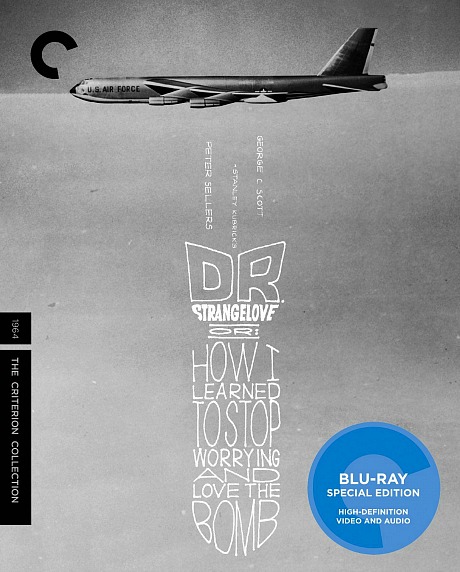
Essentially Tooze has said that while you might notice improvements while watching the Strangelove Bluray “in motion”, for some reason this difference isn’t evident in the frame captures. I’m sorry but that gives me concern. When I buy a new Bluray I want a clear “bump” — an unmistakable realization that I own a better-looking Bluray of a film than has ever been available before. So why, if there’s a bump contained in Criterion’s Strangelove, isn’t it noticable in the stills? Because the renderings are too subtle, apparently.
By all means let’s “reserve judgment until all the facts are in,” as Gen. Buck Turgidson said to President Merkin Muffley, but I don’t want to have to inspect a Bluray with a Sherlock Holmes magnifying glass and a fine tooth comb to realize it’s an improvement. I want the quality of the thing to grab me by the lapels.
The forthcoming 45th anniversary Dr. Strangelove Bluray (Sony Home Video, 6.16) is more than a visual disappointment — it’s a flat-out burn. I paid $35 bills for it yesterday afternoon and I’m seething. It’s hands down the worst grainstorm experience since Criterion’s The Third Man because Sony’s preservation and restoration guy Grover Crisp went the monk-purist route in the remastering and retained every last shard of grain in the original film elements. No John Lowry-styled finessing whatsoever.
I understand and respect the fact that Dr. Strangelove (’64) was always intended to look somewhat grainy. I realize that the inside-the-B-52 scenes used source lighting and that the combat footage outside Burpleson Air Force base was supposed to resemble newsreel footage, and these conditions were meant to result in stark and unprettified images. Which is fine. But I’ve been watching this film for decades and the Bluray version is easily the grainiest rendering yet. The grain isn’t just noticable — it’s looks much more explicit.
I’m speaking of an aesthetic concern common to all Bluray discs of older black-and-white films, which is that Bluray masterings and Bluray viewings on any decent-sized plasma or LCD screen (I have a 42-incher) tend to make the untreated natural grain elements in an older monochrome film seem much more vivid and distinct. The result is that this new Bluray version could almost be called a kind of remake. It’s Strangelove reshot in a low-lying Egyptian swamp with Peter Sellers, Sterling Hayden, George C. Scott, Slim Pickens and Keenan Wynn covered in swarms of micro-sized mosquitoes.
For comparison’s sake I popped in my favorite Dr. Strangelove DVD, which is the 2001 “special edition” with the full 1.33 to 1 aspect ratio intact. My Sony Bluray player and 42-inch plasma screen makes this version look a bit grainier than it did on my old 36-inch Sony analog flatscreen, but at least the grain isn’t amplified and underlined like it is on the Bluray, and the alternating 1.33 to a and 1.66 to 1 aspect ratio means you’ve got a taller and fuller (i.e., more aesthetically correct) image to boot.

Repeating the rant and caveat emptor — the visual textures contained in the new Strangelove Bluray make it a total visual rip. Do not buy this thing. If you have an old set with a seven-year-old DVD player or a newish plasma or LCD with a Bluray player, buy the 2001 “special edition” Strangelove and stay with it. It obviously doesn’t have the image density that the Bluray version has but you’ll be seeing more of what Stanley Kubrick originally shot and it looks reasonably acceptable in terms of sharpness and monochrome tonal correctness, etc.. And it looks somewhat less grainy and is therefore less problematic. Not a perfect rendering but better than the Bluray.
I obviously haven’t addressed the Bluray extras — the documentaries, the intro section and chaptering graphics, the packaging, etc. All of these elements are fine, entertaining, attractive, stimulating, first-rate.
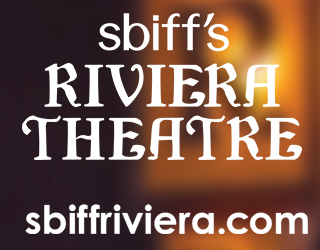
Laser Discs were cool when they were cool in the late ’80s to mid ’90s. (DVDs came in around ’97, right?) The increased clarity and sharpness, not to mention the commentary tracks and documentary supplements on the Criterion editions, delivered a kind of paradise realm. But then came laser rot and the nightmare freeze-ups that became all too common after three or four years of use. Thank God that shit is out of my movie-watching life. Thank God for the here and now.
Today on Old Format Theater I go deep through the closet to see if the Laser Disc machine still works (and yes, I kept my Laser Discs). @docstrangelove #TheApplegates pic.twitter.com/JicdXQGbEh
— Larry Karaszewski (@Karaszewski) August 28, 2020

The following is a re-wording of an HE piece posted on 7.26.15 and 3.7.12. I’m inspired to re-post after last night’s screening of a Lolita DCP at the Aero Theatre, as part of a general tribute to former Kubrick producer James B. Harris.:
Back in the early ’90s, a boxy version of Stanley Kubrick‘s Lolita was issued on Criterion CAV laser disc. By this I mean a version that was partly presented in a 1.37:1 aspect ratio with occasional 1.66 croppings from time to time.
Dr. Strangelove was also presented this way (1.37/1.66) on an early Columbia-TriStar Home Video DVD, before the 1.85 fascists muscled their way in and started cleavering everything.
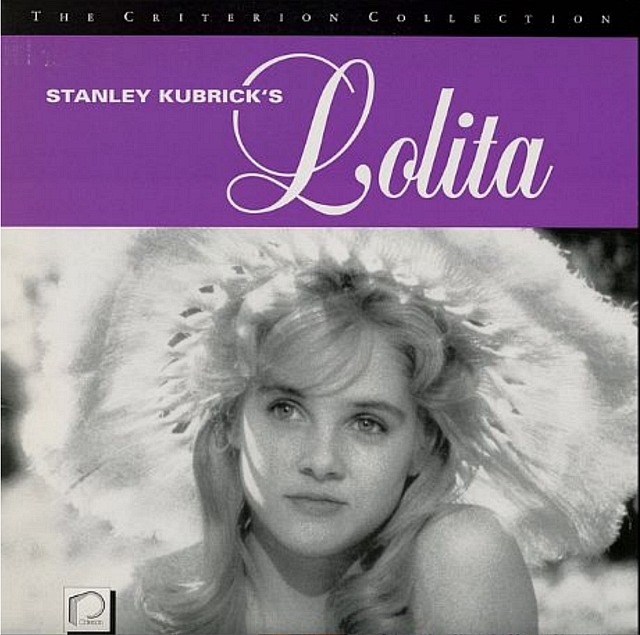
Yes, I’m happy that the current Lolita Bluray is cropped at 1.66, but boy, would I love to get hold of a high-def version of that 1992 Criterion laser disc. You think Kubrick didn’t sign off on the boxy Lolita? Of course he did.
Criterion presumably still has access to the original Lolita elements that they created their laser-disc version from. If they were to somehow wangle rights from Warner Home Video and offer a 4K-scanned version of this long-gone version (i.e., varying 1.37 plus 1.66 aspect ratios), I would buy it in a New York minute, and so would a lot of other physical-media freaks, I’m guessing. Or they could offer a streaming version on Filmstruck. Either way it would definitely sell.
I realize that relatively few people out there believe that “boxy is beautiful,” and that an alternating 1.33 and 1.66 version of Lolita means little or nothing to them, but I never bought this disc and never saw it anywhere, not once. And it’s killing me that today’s general fascist mindset (i.e., almost all non-Scope ’50s and ’60s films must conform to the 16 x 9 aspect ratio of high-def screens) makes it all but certain that this version of Lolita will never be exhibited or offered ever again. Unless Criterion changes its mind and makes the effort. I for one would be enormously grateful.
It’s around 10 pm or a bit later, let’s say, and I’m looking to wind down. What I’ll often do is put on a comfort movie — a good film I know backwards and forwards that I love to just bathe in, just settle into like steamed mud…yessss. I’ll only half-watch it as I write tweets or research something or fiddle around on Facebook or whatever, but a comfort movie is my friend, my pal, my blankey. A comfort movie obviously can’t be too challenging or antsy or jingle-jangly. It has to give me a nice “all is well with the world” feeling. Make me feel so good and so secure.
Nobody worships sparkling, needle-sharp black-and-white films more than myself so I tend to favor monochrome comfort more than color, but not entirely. Comfort movie visuals have to downshift me and treat me like some kind of cinematic masseuse. They need to make me feel like…I don’t know, like I’ve just dropped a quaalude. That dates me, doesn’t it? Okay, a Percocet.
Favorite comfort movies: John Schlesinger‘s Sunday Bloody Sunday, Kathryn Bigelow (i.e., “Biggy”) and Mark Boal‘s Zero Dark Thirty, Martin Ritt‘s The Spy Who Came In From The Cold, Stanley Kubrick‘s Paths of Glory, Irving Reis‘ The Bachelor and the Bobby Soxer, the VUDU streaming copy (i.e., not the overly inky Criterion Bluray) of Howard Hawks‘ Only Angels Have Wings and Mark Robson‘s The Bridges of Toko Ri, Don Siegel‘s Charley Varrick, Kubrick’s Dr. Strangelove, Martin Ritt‘s Hud and Alfred Hitchcock‘s Notorious, to name but a few.

Criterion’s Dr. Strangelove Bluray popped 10 days ago. Here’s my 6.11 non-review. The clip after the jump is from the opening moments of Criterion’s 1992 laserdisc of Dr. Strangelove, which was mastered with alternating aspect ratios (partly 1.37, partly 1.66), presumably in accordance with Kubrick’s wishes. I have an old Columbia/TriStar Strangelove DVD that also uses this a.r., but you’ll never see a boxy Strangelove in high-def…ever. If I had been in charge of mastering the Criterion Bluray I would have included a 1.37 version for “boxy is beautiful” types, but we’re a dying breed. Guys like Bob Furmanek and Pete Apruzzese have seen to that.
Kubrick’s DR. STRANGELOVE is just one of the 800-plus Criterion titles on sale at @BNBuzz! https://t.co/UOUZqgckNH pic.twitter.com/f2Nb2pPEPl
— Criterion Collection (@Criterion) July 6, 2016
There’s a visual clue at the bottom of the latest Criterion newsletter about an upcoming Bluray…duhhh. The question is “why?” The Sony Bluray that popped in 2009 is totally fine. Yes, I’ve always wanted to see a 1.33 or 1.37 version with occasional 1.66 in-camera croppings rather than a 1.66 all-in, but…well, maybe this is a Criterion notion. An HE reader recalled this morning that he “had the Criterion Laserdisc of Dr. Strangelove” way back when and recalls “an explanation in the notes about how the aspect ratio of the B-52 sequences being 1.33:1 (?) was intentional. I’d assume they would carry that over to the Bluray.”
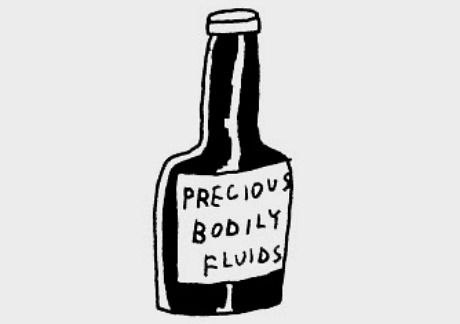
Here’s an open-letter proposal addressed to the Academy, Quentin Tarantino‘s New Beverly Cinema and the programmers of the American Cinematheque’s Egyptian and Aero theatres to devote seven days to the glorious 1.66:1 aspect ratio. They don’t have to call it the Hollywood Elsewhere 1.66:1 Celebration Festival, but seriously…who else has stood up for 1.66:1 like I have? Who else has gone mano e mano with 1.85 fascists (Bob Furmanek, Pete Apruzzese) whenever a new Bluray of a 1950s or early ’60s comes out with a 1.78 or 1.85 aspect ratio? Who else has pleaded with Universal Home Video for a 1.66:1 aspect ratio for the forthcoming One-Eyed Jacks Bluray?
The idea would be to schedule this festival sometime in the dog days of August. It’ll create a lingering impression, a kind of stamp upon the bicoastal film culture. People need to be reminded that once there was a realm called 1.66, and that it was one of the most visually gratifying rectangles in the history of 20th Century cinema. Think of it — nothing but 1.66 films back to back for five or seven days straight! Plus a chance to correct previous Bluray mis-croppings (i.e., The Manchurian Candidate and A Hard Day’s Night Blurays presented at 1.75 but easily croppable at 1.66).
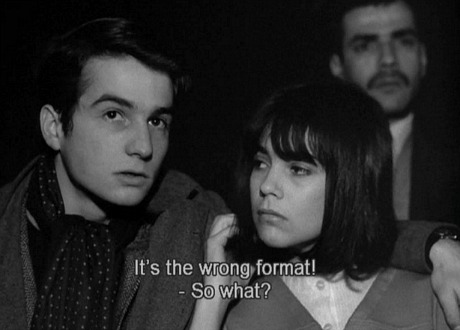
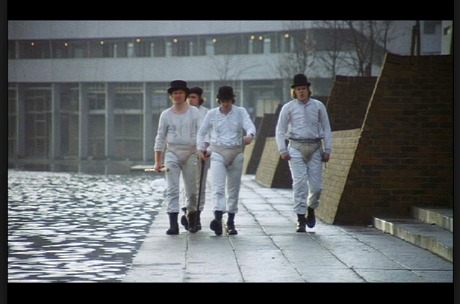
The following should be included: (1) Alfred Hitchcock‘s Psycho (easily croppable at 1.66 despite Universal Home Video’s decision to issue the Bluray in a “rape” aspect ratio of 1.78); (2) Roman Polanski‘s Repulsion; (3) Francois Truffaut‘s The Last Metro; (4) Wim Wenders‘ The American Friend; (5) Merchant-Ivory‘s A Room With A View; (6) Elia Kazan‘s On The Waterfront; (7) the first three James Bond films — Dr. No, From Russia With Love and Goldfinger; (8) Wong Kar Wai‘s Chungking Express; (9) Otto Preminger‘s Anatomy of a Murder (Criterion Bluray presented this 1959 pic within a 1.85 “rape” aspect ratio); (9) John Frankenheimer‘s The Manchurian Candidate, Seven Days in May and The Train; (10) Stanley Kubrick‘s Lolita, Dr. Strangelove, Barry Lyndon; (11) John Schlesinger‘s Sunday Bloody Sunday; (11) Clive Donner‘s What’s New, Pussycat?; and (12) Guy Hamilton‘s The Devil’s Disciple.

A long time ago in a galaxy far, far away, a boxy version of Stanley Kubrick‘s Lolita was issued on Criterion CAV laser disc. By this I mean a version that was partly presented in a 1.37:1 aspect ratio with occasional 1.66 croppings from time to time. Dr. Strangelove was also presented this way (1.37/1.66) on an early Columbia-TriStar Home Video DVD, back before the 1.85 fascists muscled their way in and started cleavering everything. Yes, I’m happy that the current Lolita Bluray is cropped at 1.66, but boy, would I love to get hold of a high-def version of that 1992 Criterion laser disc. You think Kubrick (whose birthday is being celebrated today) didn’t sign off on the boxy Lolita? Of course he did.
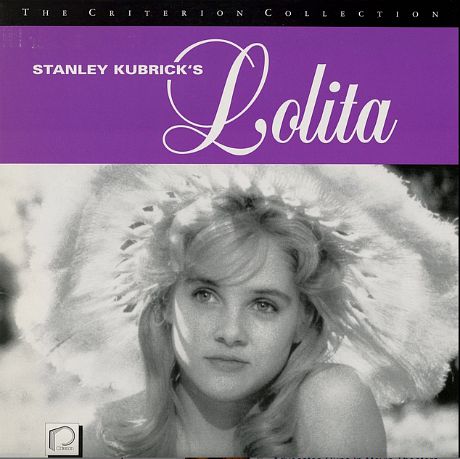
Sometime in the early to mid ’90s, or roughly 16 or 17 years ago, the Criterion Co. put out a laser disc of Stanley Kubrick‘s Lolita that — hold on to your hats — presented the film in alternating aspect ratios of 1.33 and 1.66, or the same way that an early 2001 DVD presented Dr. Strangelove, which is the way Kubrick shot both films and wanted them seen.

Before, that is, the fascist mindset took over and cropped Dr. Strangelove down to 1.66 to 1, blowing off the 1.33 portions entirely. Don’t listen to the 16 x 9 absolutists on this. They lie, they cheat, they maim…and they call information for numbers they could easily look up in the book.
The only way Lolita has been viewable since it began appearing on DVD is within a 1.66 to 1 aspect ratio. The recently released Bluray is also in 1.66 to 1. I’m fine with these, but I’m deeply sorry I never saw the alternating a.r. version.
I realize that relatively few people out there believe that “boxy is beautiful,” and that an alternating 1.33 and 1.66 version of Lolita means little or nothing to them, but I never bought this disc and never saw it anywhere, not once. And it’s killing me that today’s general fascist mindset (i.e., all non-Scope ’50s and ’60s films must closely conform to the 16 x 9 aspect ratio of high-def screens) makes it all but certain that this version of Lolita will never be exhibited or offered ever again. We all know who to blame for this so I won’t name names. I’m posting this as a lament.

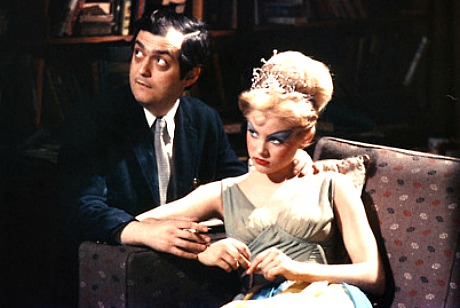
Stanley Kubrick, Sue Lyon during filming of Lolita.
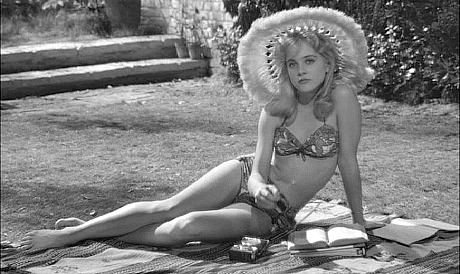
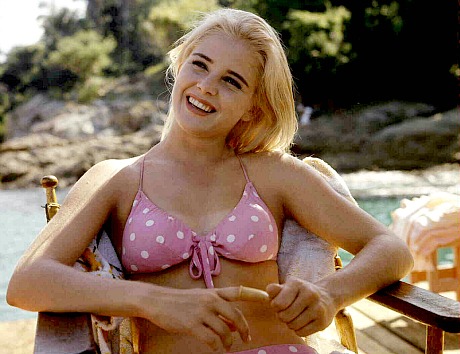
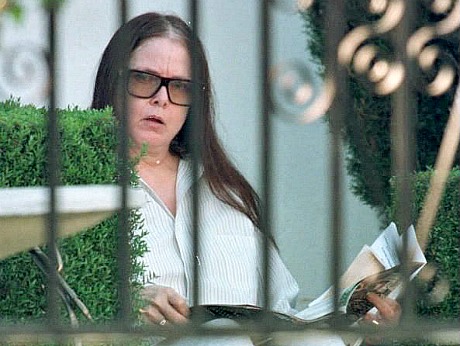
Allegedly a 2004 photograph of Sue Lyon.
I was surprised to discover that the 1.66 to 1 crop used in the new Criterion Bluray of Paths of Glory feels relatively satisfying. All I can finally say is that it looks “right,” as if 1.66 to 1 was the idea all along. And I sat down with this disc ready to dislike what I might see and totally prepared to complain. But it doesn’t look bad. None of the framings seem cramped or confined.

This is a significant admission for me as I’ve been a 1.33 to 1 aspect ratio purist all my life. I wrote in May 2009 that cropping Dr. Strangelove to 1.66, despite the 1.33 aspect ratio providing acres of luscious head-room, was unfortunate. And I’ve said time and again that the new Psycho Bluray is revisionist vandalism due to Alfred Hitchcock‘s 1960 classic having been cropped to 1.78 in order to fit high-def plasma and LCD screens, despite Psycho having been shown on TV for decades at a perfectly pleasing 1.33 to 1 shape.
A part of me would still prefer to see Stanley Kubrick‘s 1957 anti-war classic opened up to a boxier 1.33 to 1 aspect ratio. 1.33 framings are immaculate in my book because of the Hollywood Elsewhere extra-air-space and room-to-breathe headroom principle — i.e., the more space around and particularly above the actors heads, the more pleasing to the eye.
Criteron’s Bluray mastering is superb. It has grainy textures, but they’re acceptable to my eyes. The detail is improved, of course, and the monochromatic range seems greater than any version I’ve seen before (including 35mm projection). Those mild, mid-range grays seem more vivid and robust. And I love the heightened indications of moisture in the eyes of the soldiers, and the fibres on uniforms and overcoats coming through with greater clarity and relief.
Paths of Glory has never looked or felt as good as this. What a sensual bath this Bluray disc amounts to. Watching it is almost like lying on one of those portable fold-up tables and getting a facial.
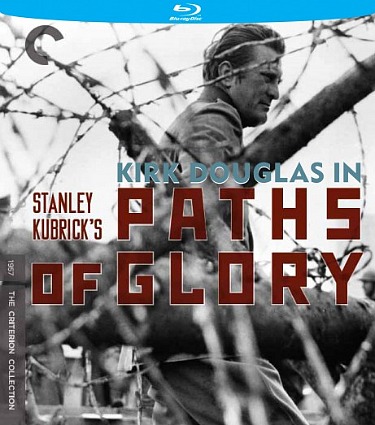


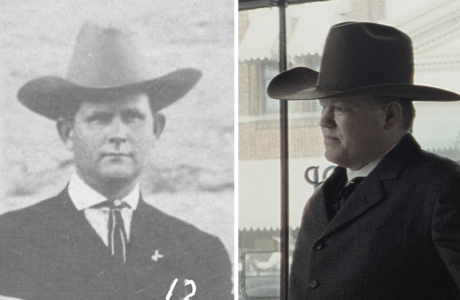 All Hail Tom White, Taciturn Hero of “Killers of the Flower Moon”
All Hail Tom White, Taciturn Hero of “Killers of the Flower Moon”Roughly two months ago a very early draft of Eric Roth‘s screenplay for Killers of the Flower Moon (dated 2.20.17,...
More »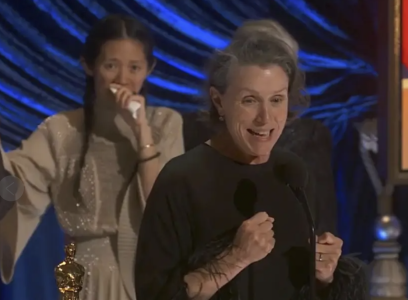 Dead-End Insanity of “Nomadland”
Dead-End Insanity of “Nomadland”Frances McDormand‘s Fern was strong but mule-stubborn and at the end of the day self-destructive, and this stunted psychology led...
More »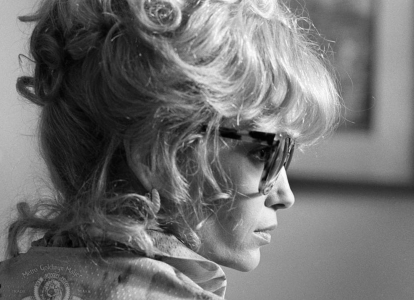 Mia Farrow’s Best Performances?
Mia Farrow’s Best Performances?Can’t decide which performance is better, although I’ve always leaned toward Tina Vitale, her cynical New Jersey moll behind the...
More »

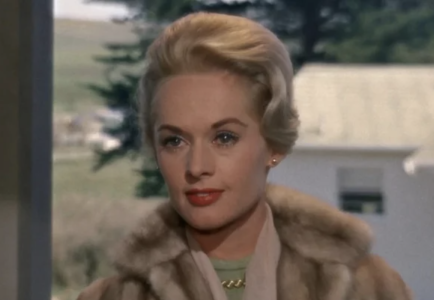 Hedren’s 94th
Hedren’s 94thTwo days ago (1.19) a Facebook tribute congratulated Tippi Hedren for having reached her 94th year (blow out the candles!)...
More » Criminal Protagonists
Criminal ProtagonistsA friend suggested a list of the Ten Best American Crime Flicks of the ‘70s. By which he meant films...
More »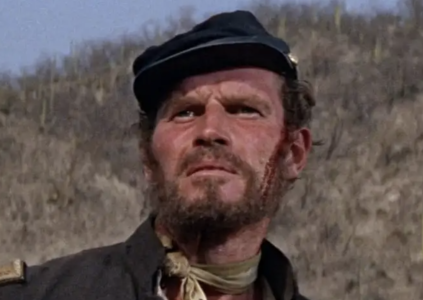 “‘Moby-Dick’ on Horseback”
“‘Moby-Dick’ on Horseback”I’ve never been able to give myself over to Sam Peckinpah’s Major Dundee, a 1965 Civil War–era western, and I’ve...
More »


